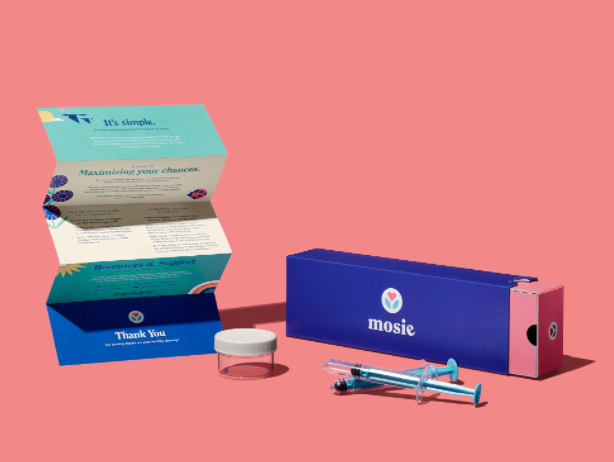
Methods of Conception
The world of fertility looks a lot different than it did 10 or 20 years ago. So, it’s probably time to do away with the terms “natural” birth and conception—an unfair and outdated approach to how we define someone’s journey to parenthood. While, yes, sexual intercourse is still the most common road to conceiving a child, it’s not the only way and that list of methods of conception continues to grow. Whether you’re single and want to have a child, in a cis-gendered relationship, identify as part of the LGBTQIA community, or (but also, and) are dealing with infertility, sex isn’t the only way to make a baby.
Let’s talk about—and normalize— some of the different options available so you and your doctor can find the best fit for your needs.
Medication
There are several types of medication your doctor may prescribe to assist in infertility issues you may be experiencing. The medications, which come in pill form or are injectable, may be used alone or in conjunction with other fertility treatments, depending on your circumstances and have up to 50% efficacy in conceiving. Doctors will prescribe different medications, such as Clomid or Letrozole, to try and stimulate ovulation or improve sperm quality, often as the first step in treating infertility because the medications can be lower in cost than other procedures and are less invasive. However, not all medications are covered by insurance and can cost up to $6,000 per cycle. It’s also important to consider the side effects, which include bloating, headaches, brain fog, hot flashes, and nausea amongst others. For some, the side effects can be severe which is why, while taking fertility medication, your doctor will want to monitor your health with regular blood tests, ultrasounds, or other physical exams.
Ovulation induction medications are designed to be taken alongside lifestyle changes, read our top foods for ovulation stimulation here.
Intracervical Insemination (ICI)
Intracervical Insemination, or ICI, is when semen is transferred directly at or near the cervical opening, which is the opening to the uterus. While this might sound complicated, it is one of the less invasive fertility options available. You can complete the transfer at home, using a syringe like Mosie, or at your doctor’s office, where they’ll use a thin, flexible tube with a syringe attached to the end. The at-home method — sometimes called home insemination or the turkey baster method — has been honed over the years to make the process easier and can lead to higher chances of getting pregnant. For instance, The Mosie Syringe, from Mosie Baby, is the first of its kind for at-home ICI and is clinically proven as effective as IUI.
Generally, ovulation occurs once a month and you’ll want to start ICI just before ovulation begins to give sperm time to start moving toward the fallopian tubes, where fertilization usually takes place. It’s helpful to think of ICI as giving sperm a head start, which is why it’s the recommended method for those struggling with low sperm count or motility or impotence, premature ejaculation, or intimacy issues. Others who may benefit from ICI are individuals with unexplained infertility, cervical mucus problems, vaginismus or for whom sex is painful or unappealing; someone with a disability; single parents; LGBTQIA families; or co-parents uninterested in having sex with each other. Candidates should be able to confirm ovulation, have a healthy uterus, and at least one functioning fallopian tube.

Intrauterine Insemination (IUI)
Intrauterine insemination is similar to ICI but it cannot be performed at home and should always be performed by a doctor or midwife. The process begins with your provider collecting semen from your partner or donor to “wash”, a process that helps collect a concentrated amount of healthy sperm. It is later inserted directly into your uterus using a catheter.
IUI is often used when the sperm is lower quality or slow-moving, or when the sperm count is low. So, before recommending this process, your doctor will likely perform a sperm analysis, as well as tests to determine whether the person being inseminated is still ovulating or whose cervical mucus might not easily transport the sperm to egg through sexual intercourse. Depending on your circumstances, doctors might try to go with IUI before moving on to other fertility treatments because of its lower cost and less invasive process. You can expect to undergo IUI for multiple cycles before conceiving or moving on to other treatments.
In Vitro Fertilization (IVF)
Unlike ICI or IUI, in vitro fertilization is a multi-step process where eggs are fertilized with sperm outside of the body and later implanted into the uterus. First, a doctor will extract eggs by stimulating and triggering ovulation with the help of different medications. This process may require daily injections, blood tests, and vaginal ultrasounds. The mature eggs can be frozen and fertilized at a later date or fertilized right after extraction with a partner or donor’s sperm. After fertilization, embryos can also be frozen or implanted into the uterus to hopefully form a pregnancy. Sometimes, doctors will implant multiple embryos at once to increase the chances of leading to a positive pregnancy test.
IVF is recommended to many folks who are trying to conceive including: older individuals with diminished egg reserve, those with damaged or removed fallopian tubes, those with endometriosis scarring (which can make ovulation and fertilization inside the body difficult), or those with sperm quality and count issues. People also might choose IVF so genetic testing can be performed on embryos prior to implantation; this is more common for those who carry genetic mutations or are at high risk for specific illnesses. The success rate depends on the age of the person whose egg is being fertilized and in whose uterus the embryo will be implanted — these are not always the same person, like when a donor egg or surrogate is used. As a general rule, the odds of successful conception decrease after age 35.
Donor Sperm, Eggs, Embryos
We’ve already mentioned the use of donors in conception, more often with sperm. However, eggs and embryos might also be donated, depending on a person’s specific needs. Donor sperm and eggs donated through traditional surrogacy can be used with ICI, IUI, and IVF, however, other donor eggs and embryos can only be used with IVF. Donor eggs and embryos help individuals with damaged ovaries or who have undergone chemotherapy or radiation, who carry genetic disorders they don’t wish to pass along to a child, or who are older with poor egg quality and quantity. Donor eggs and embryos help those who are older but still want children or who have/had an illness that makes it very difficult to conceive on their own.
Surrogacy
Surrogacy can be used in conjunction with donor sperm, eggs, or embryos, as well as through ICI, IUI, and IVF. There are a number of reasons to use a surrogate (sometimes referred to as a gestational carrier). Individuals who might not have the option to become pregnant or who don’t want to choose which partner carries the child; individuals for whom pregnancy poses significant health risks — they may know this before ever becoming pregnant or after a pregnancy; someone who’s undergone a hysterectomy; those who have exhausted other options for conception; or who want to have a child but simply do not wish to carry it themselves for personal reasons.
There are two types of surrogates, traditional and gestational. The main difference is that traditional surrogates also donate their eggs, and can be inseminated with ICI, IUI, or IVF, whereas gestational surrogates do not donate their eggs and will need to go through IVF to conceive. In short, surrogacy is often a great option for people with untreatable fertility issues or barriers to conception but wish to conceive a child (other than adopting). Unsurprisingly, it is also the most costly option due to the number of procedures and factors to consider, including fees to surrogate agencies or compensation for the surrogate.
As time passes, we expect to see even more developments in fertility treatments, with an expansive array of methods of conception available to all individuals who wish to have a child but need medical support in order to make this happen. While reading this list may help you determine which option is best for your family, it’s important to discuss your options with your doctor and undergo a physical exam prior to beginning your fertility journey. As always, we’ll be keeping our fingers crossed and are here for you if you have additional questions.
This article was written by Suzanne Zuppello and medically reviewed by Sarah Marsh, RN, CNM, MSN, MPH and brought to you by Mosie Baby, inventors of Mosie – the first syringe designed specifically for home insemination that’s clinically proven as effective as IUI.
back to top
Foodbaby WAS FOUNDED on Kulin Nation land. We acknowledge the Wurundjeri people, Indigenous Australians, who are the Traditional Custodians of this land. We pay our respects to all Aboriginal and Torres Strait Islander Peoples and their Elders past, present and emerging.
Fertility dietitian, cycles nerd, lover of food and squishy newborn baby cuddles. I help people get pregnant (fast) and have the healthiest pregnancies possible.
Hey, I'm Ami
@foodbabyfertility